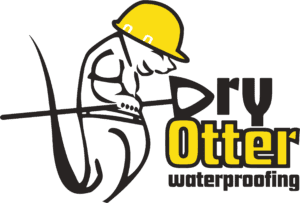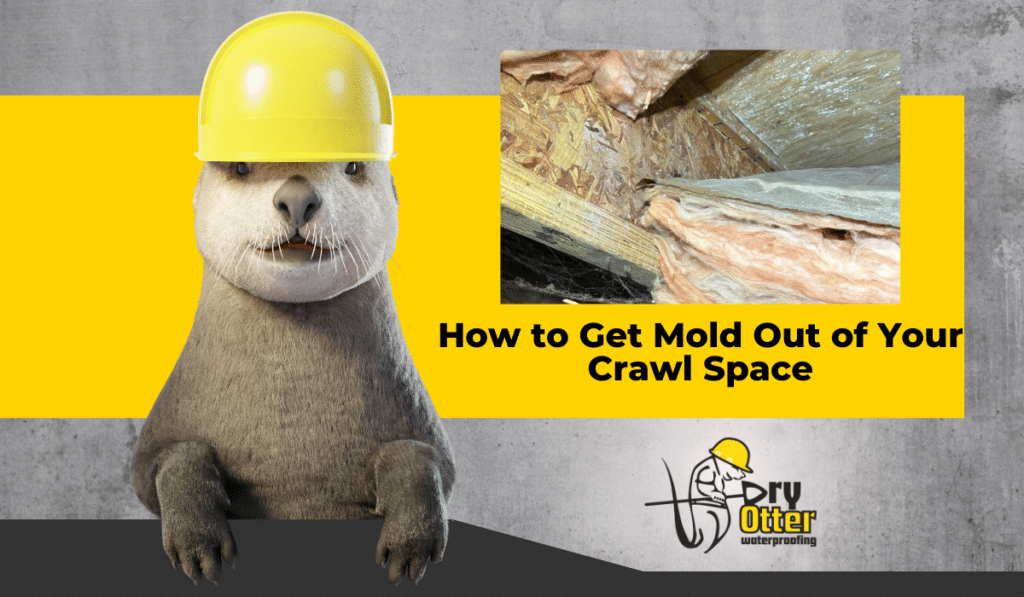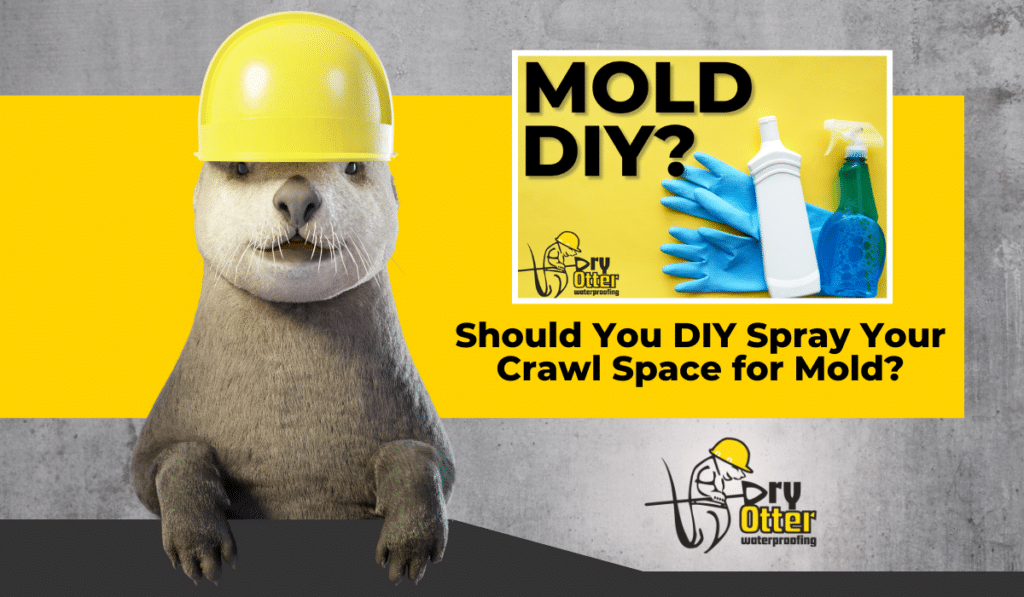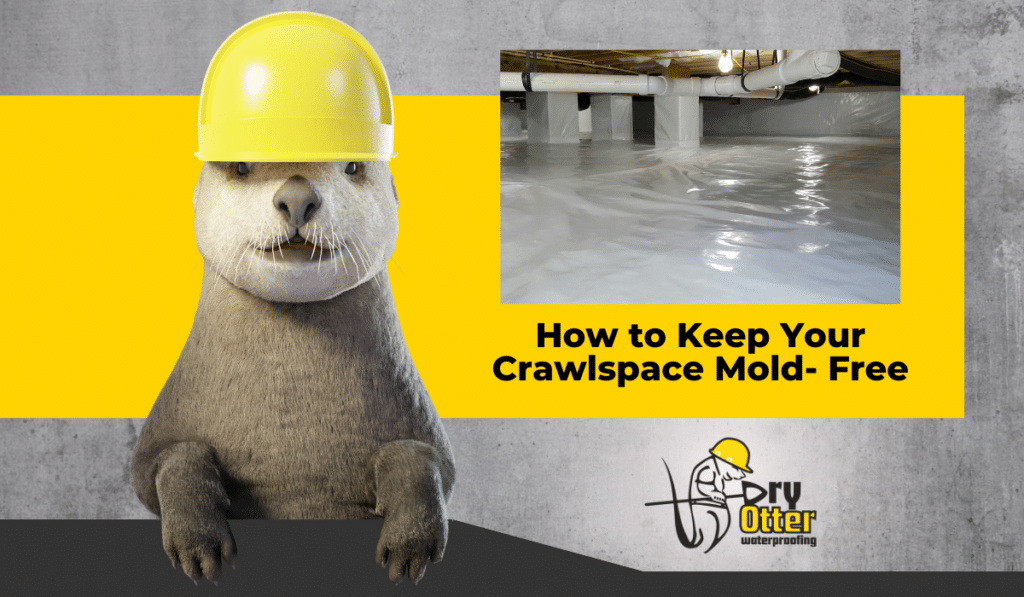Crawl spaces are perfect breeding grounds for mold. They are often damp, have poor airflow, and contain materials like wood that serve as food for mold growth.
There are many types of mold, and each type can affect your health and the structural integrity of your home. This is why it is important to understand the different types and the dangers they present.
This article will cover types of mold in crawl space areas, how to identify them, and tips for effective removal.
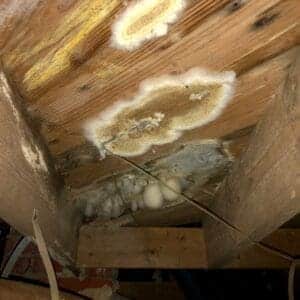
Common Types of Mold Found in Crawl Spaces
White mold: White mold in crawl space areas is a type of fungi that appears white or grayish-white in the early stages of growth.
Identifying white mold: Look for fluffy, cottony, or powdery white substances. It can also look like white spots or patches and feel soft or slimy.
Commonly found on wood joists, support beams, wooden subflooring, insulation, and soil.
Health concerns: Inhaling mold spores can affect allergies, asthma, and other respiratory issues, as well as headaches and skin or eye irritation.
Structural concerns: Mold feeds on wood so that wood structural components will decay and weaken over time.
Black mold: Finding black mold in crawl space areas is commonly associated with alarming health risks.
Identifying black mold: It is typically black or dark greenish-black, but color alone isn’t always a reliable identifier. It is often slimy or wet when growing but can turn powdery when it dries. It emits a musty, earthy odor.
Black mold tends to grow in patches, usually with a slightly raised appearance. It is also rapidly growing, especially in high moisture.
Health concerns: Allergic reactions can occur like other molds. Symptoms are sneezing, coughing, watery eyes, and skin rashes.
Respiratory irritation can occur when inhaling mold spores, potentially worsening asthma and other lung conditions.
Mycotoxins: Black mold produces mycotoxins, which are toxic substances that are linked to severe health issues. While research is still ongoing, studies suggest that mycotoxins can trigger or aggravate:
- Respiratory problems
- Immune system suppression
- Neurological effects like headaches, memory problems, and more.
Not all black molds are Stachybotrys chartarum. Other molds can appear black, so proper identification and removal by a professional is the only way to know what you’re dealing with. In any case, it shouldn’t be ignored.
Other types of mold: Other types of mold in crawl space areas are green and yellow mold.
Green mold looks light or dark forest green. It is velvety, fuzzy, or powdery. If high humidity is present, it is typically found on damp walls, dirt floors, and other areas in your crawl space.
Yellow mold is bright yellow or golden, sometimes with a slimy texture, powdery texture, or crusty appearance. This type of mold is incredibly destructive to wood in crawl spaces.
Causes of Mold Growth in Crawl Spaces
Humidity and Poor Ventilation: High humidity levels are the perfect breeding ground for mold. In addition to high humidity, the lack of airflow throughout the crawl space further fuels the growth of mold spores.
Standing Water and Leaks: Mold grows in areas with heavy moisture, so when pipes or mechanicals leak or standing water from heavy rain is present, it should be addressed immediately before mold can grow.
Organic Materials: When excess moisture is present, organic materials like wood, paper, and insulation should always be monitored. They are the perfect food for mold growth.
Health and Structural Risks of Crawl Space Mold
Mold can trigger respiratory issues, allergic reactions, and other symptoms like:
- Coughing, wheezing, and shortness of breath.
- Asthma attacks, sinus infections, and Bronchitis.
- Sneezing, runny nose, itchy eyes, and skin rashes.
- Headaches, fatigue, nausea, eye irritation, and cognitive difficulties.
Wood rot is one of the biggest structural issues that compromises your foundation because it is food for mold.
How to Treat Different Types of Crawl Space Mold
DIY Mold Treatment: Small areas of white mold can be treated by spraying white vinegar or hydrogen peroxide on them. Always wear protective gear. Let the solution sit for an hour, then clean with a soft-bristle brush.
When to Call Professionals: If you see widespread mold growth, especially black mold, the safest course of action is to call a professional for proper assessment and safe removal.
Preventing Mold in the Crawl Space
Encapsulation: Your crawl space is completely sealed from moisture intrusion, preventing future mold growth.
Dehumidifier and Ventilation: A dehumidifier reduces humidity, and when coupled with proper ventilation, this combination effectively controls moisture levels and deters mold growth.
Regular Inspections: catch issues before they become widespread or a severe problem.
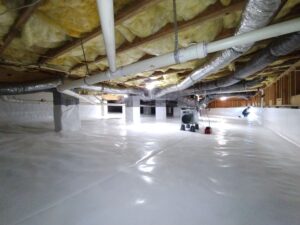
Crawl space mold is a serious issue. Don’t take a chance; call the experts at Dry Otter Waterproofing for effective mold remediation and prevention solutions!
